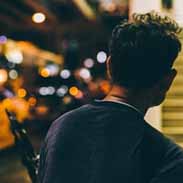Test Answers on Homework 11 – Flashcards
Unlock all answers in this set
Unlock answersquestion
In economics, money is defined as A. the total value of one's assets in current prices B. the total value of one's assets minus the total value of one's debt, in current prices C. the total amount of salary, interest, and rental income earned during a year D. any asset people generally accept in exchange for goods and services
answer
any asset people generally accept in exchange for goods and services
question
Money is A. an asset that people are willing to accept in exchange for goods and services B. a liability that people are willing to accept in exchange for goods and services C. the income one earns over a period of time D. one's assets net of one's liabilities at any point in time
answer
an asset that people are willing to accept in exchange for goods and services
question
A major source of inefficiency in barter economies is that they require A. a standard of deferred payment to make trade possible B. a double coincidence of wants in exchange C. more liquid store of value than do monetary economies D. all of the above are correct
answer
a double coincidence of wants in exchange
question
The statement "This Dell laptop costs $1,200" illustrates which function of money? A. medium of exchange B. unit of account C. store of value D. standard of deferred payment
answer
unit of account
question
The M2 measure of the money supply equals A. savings account balances plus small-denomination time deposits plus traveler's checks. B. savings account balances plus small-denomination time deposits plus noninstitutional money market fund shares. C. M1 plus savings account balances plus small-denomination time deposits. D. M1 plus savings account balances plus small-denomination time deposits plus noninstitutional money market fund shares.
answer
M1 plus savings account balances plus small-denomination time deposits plus noninstitutional money market fund shares
question
If households and firms decide to hold less of their money in checking account deposits and more in currency, than initially, the money supply A. will not change B. will increase C. will decrease D. may increase or decrease
answer
will not change
question
Imagine that Kristy deposits $10,000 of currency into her checking account deposit at Bank A and that the required reserve ratio is 20%. As a result of Kristy's deposit, Bank A can make a maximum loan of A. $20,000 B. $8,000 C. $10,000 D. $50,000
answer
$8,000
question
Banks can continue to make loans until their A. actual reserves equal their required reserves B. excess reserves equal their required reserves C. actual reserves equal their excess reserves D. actual reserves equal their checking account balances
answer
actual reserves equal their required reserves
question
The more excess reserves banks choose to keep, A. the larger the deposit multiplier B. the smaller the deposit multiplier C. the higher the required reserve ratio D. the lower the required reserve ratio
answer
the smaller the deposit multiplier
question
Net worth is A. a measure of a firm's profits B. part of stockholder's equity C. the difference between a firm's assets and liabilities D. listed on the asset side of a firm's balance sheet
answer
the difference between a firm's assets and liabilities
question
Suppose the reserve ratio is RR. Then, A. required reserves = R x actual reserves B. required reserves = RR x excess reserves C. required reserves = RR x deposits D. required reserves = RR x loans
answer
required reserves = RR x deposits
question
If the required reserve ratio is RR, the deposit multiplier is defied as A. 1/(1-RR) B. 1/RR C. 1/RR x change in bank reserves D. 1/(1-RR) x change in bank reserves
answer
1/RR
question
The Federal Reserve was established in 1913 to A. prevent inflation by decreasing the money supply B. stimulate the economy by increasing bank reserves C. stop bank panics by acting as a lender of last resort D. prevent bad loans by requiring banks to hold reserves
answer
stop bank panics by acting as a lender of last resort
question
To increase the money supply, the Federal Reserve could A. raise the discount rate B. decrease income taxes C. raise the required reserve ratio D. conduct an open market purchase of Treasury securities
answer
conduct an open market purchase of Treasury securities
question
A central bank can help stop a bank panic by A. raising the required reserve ratio B. calling in consumer loans C. acting as a lender of last resort D. decreasing income taxes
answer
acting as a lender of last resort
question
Economies cannot function without money. A. true B. false
answer
false
question
Liquidity increases as we move from the M1 to the M2 defnition of the money supply. A. true B. false
answer
false
question
A cash withdrawal reduces deposits, reserves, and excess reserves in the banking system. A. true B. false
answer
true
question
The Fed can change the money supply more quickly by using open market operations as compared to discount policy. A. true B. false
answer
true



